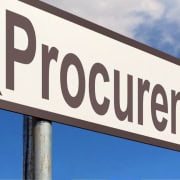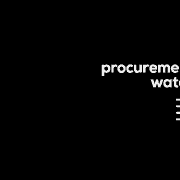|
Getting your Trinity Audio player ready...
|
- NOTE (12 November 2021): In October 2021, Corruption Watch (CW) released its first Procurement Watch Report on Procurement Risk Trends. It reported on trends emerging from data published by National Treasury on various aspects of public procurement, notably deviations from procurement procedures, contract variations and restrictions of suppliers. The report has now been updated and version 2 is published here. This version contains updated data since the first report. Most notably, following the release of the first report, it has emerged that some of the data published in National Treasury’s quarterly reports is incorrect. A notable example is the contract variation reported in the 2018/2019 Quarter 3 report which indicated a contract variation by the ECIC of R157 638 540 on an original contract value of R53 475. Following submissions made by the ECIC to CW, it has emerged that this reporting is incorrect. The correct variation was in the amount of R157 638.54 from a contract value of R53 475 to R211 113.54 (294.7% increase). CW has accordingly also corrected this in the report, and this article has been updated as well. This exchange illustrates the utility of the Procurement Watch tool to interrogate data as published.
Public procurement is particularly susceptible to corruption, says the UN Office for Drugs and Crime. Such corruption includes bribery, embezzlement, abuse of power, collusion to fix prices, existence of cartels, and other practices that result in government not receiving value for money in the procurement process.
Apart from grants and social programmes, says UNODC, procurement is one of the major avenues through which public finances are expended, “and the large amounts of money involved can provide opportunities for unethical practices such as fraud and corruption”.
Corruption Watch (CW) notes with dismay that despite numerous promises and commitments to rooting out corruption in this area, the illegal practice continues apace in South Africa. In its 2021 Analysis of Corruption Trends report, released in September, the organisation revealed that procurement corruption, with maladministration, was the most common type of corruption across various sectors, as reported in the first six months of the year.
To help other organisations and individuals to more easily pick up red flags relating to deviations and contract extensions in the public procurement sphere, CW has developed Procurement Watch (PW), a tool that aggregates data from reports submitted to National Treasury by all procuring organs of state.
To coincide with the launch of this resource, CW today releases a report featuring the first PW analysis of selected forms of procurement data between 2016 and 2021. Authored by procurement law expert Prof Geo Quinot of Stellenbosch University, the report specifically focuses on trends in requests for deviations and contract expansions, accompanied by an analysis of restricted suppliers.
“There can be little doubt that public procurement has become a major site of maladministration and corruption in South Africa,” Quinot commented. “Testimony before the Zondo Commission has made that clear. However, procurement is governed by myriad, highly technical, and at times inconsistent, legal rules so that it is often very difficult to distinguish between genuine instances of bona fide exceptional circumstances, where departure from procurement rules will be justifiable, and instances of malfeasance in procurement.”
Download the Procurement Watch 2021 report.
Deviations and expansions declining
Between 2016 and 2021, the number of reported deviations amounts to 1 948 (supported) and 1 279 (unsupported), with a combined peak in 2017. Since then, although the number of unsupported deviations rose in 2018 and 2019, the overall figure declined from 2020. This, the report notes, can be attributed to the Covid-19 emergency procurement rules, which introduced adjusted procedures for procurement and reduced procurement on non-pandemic related goods and services.
Of the 10 highest deviations recorded during the period under review, half of them occurred at Eskom, and 80% were for procurement of coal. However, South African Airways incurred the biggest deviation amount, a mind-boggling R13.6-trillion for requests for funding with various suppliers – this was not supported by Treasury. Other profligate top 10 entities include Transnet with two major deviations, and the Passenger Rail Association of South Africa and the Department of Higher Education and Training, with one apiece.
In terms of expansions, the number reported to the National Treasury between 2017 and 2021 amounts to 1 991 supported expansions and 1 052 unsupported. Again, the report shows a decline in the number reported in 2020, following a trend seen since 2017, but in 2021 the number rose again.
The list of the 10 largest expansions offers serious cause for concern. The top culprit in monetary terms is the Department of Basic Education which expanded its contracts with various suppliers by R33.4-billion, an increase of 26 815% over the original values. However, Eskom wins the (dubious) prize for the most expansions in the top 10, with eight.
Listed debarred suppliers a mere fraction of the reality
“Of the two restricted suppliers lists,” the PW report notes, “the Register for Tender Defaulters and the Database of Restricted Suppliers, there are only currently listings on the latter. The Register for Tender Defaulters contains no current listings.”
Of interest is the small number of organs of state that have submitted names of suppliers to be included on the Database for Restricted Suppliers, the report states. Only 32 entities have contributed data, from around 40 national departments, 103 provincial departments, 278 municipalities, nine constitutional institutions and 154 other public entities listed in schedule 3 of the PFMA – that is at least 584 entities procuring under rules that include debarment on this list (not counting subsidiaries and municipal entities).
The City of Cape Town tops this list with 54 submissions, followed by the Limpopo local government and housing department with 42. The Western Cape health department is a distant third with 20 submissions. The vast majority of submissions per entity are in the single figures.
Furthermore, it seems that only a small proportion of SCM abusers end up on the database. Some well-known transgressors have thus far completely escaped debarment. For example, Swifambo Rail Leasing, which was found by the High Court to have abused the SCM system by fronting for another supplier, is not listed. even though the Preferential Procurement Regulations, 2017 clearly recognise fronting as a ground for listing.
By far the most common reason for placing suppliers on the restricted list is poor performance – this applies to 65 suppliers. Another 23 were found to have submitted fraudulent tax clearance certificates, while 21 were restricted for non-performance. These reasons are as provided by the entity, states the report, so they do show a certain amount of overlapping.
Other reasons range from conflict of interest and misrepresentation of information, to collusive bidding and breach of contract. The reasons for listing, the PW report notes, also clearly indicate that not all listings relate to fraud or corruption; some relate purely to performance.
Deviations and expansions are permitted in certain cases
While deviations and contract expansions can be signs of corruption, it is important to note that such procedures are permitted under certain circumstances, and may not necessarily indicate procurement abuse. For instance, the report notes, “if an organ of state wishes to acquire a unique piece of scientific equipment that is manufactured by only one supplier, there is no point in inviting public tenders for the supply of such equipment even though the value of the envisaged acquisition may be far above the threshold for the mandatory use of open bidding methods of procurement”.
Furthermore, using the open bidding procedure would be a waste of public resources since it would not generate competition among suppliers. Such a procedure should only be used in exceptional cases, so an entity that routinely uses deviations may be failing to plan properly for its procurement functions, or there may be abuse of the system.
In terms of expansions, these may certainly be required during the normal course of procurement. However, they too may easily be abused, for instance, to award a much bigger contract to the supplier than was originally tendered for. Any expansion beyond the values stipulated in National Treasury’s instruction must first be approved by the relevant treasury.
Suppliers involved in these illegal activities may be restricted from doing business with the state by one of two mechanisms – a register for tender defaulters, as provided for in the Prevention and Combating of Corrupt Activities Act, or a database maintained by National Treasury. In both cases, organs of state are prohibited from awarding contracts to such listed suppliers.








